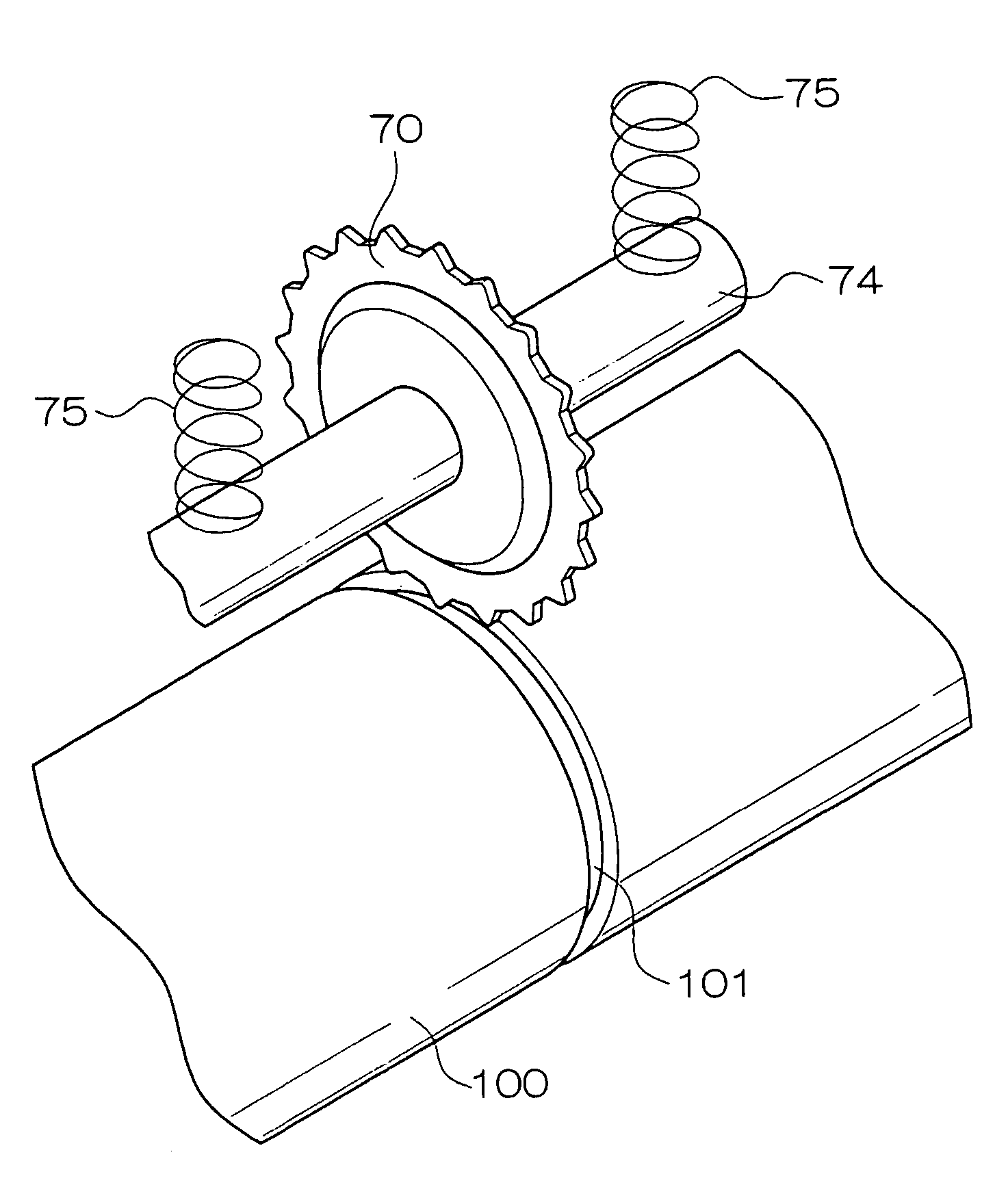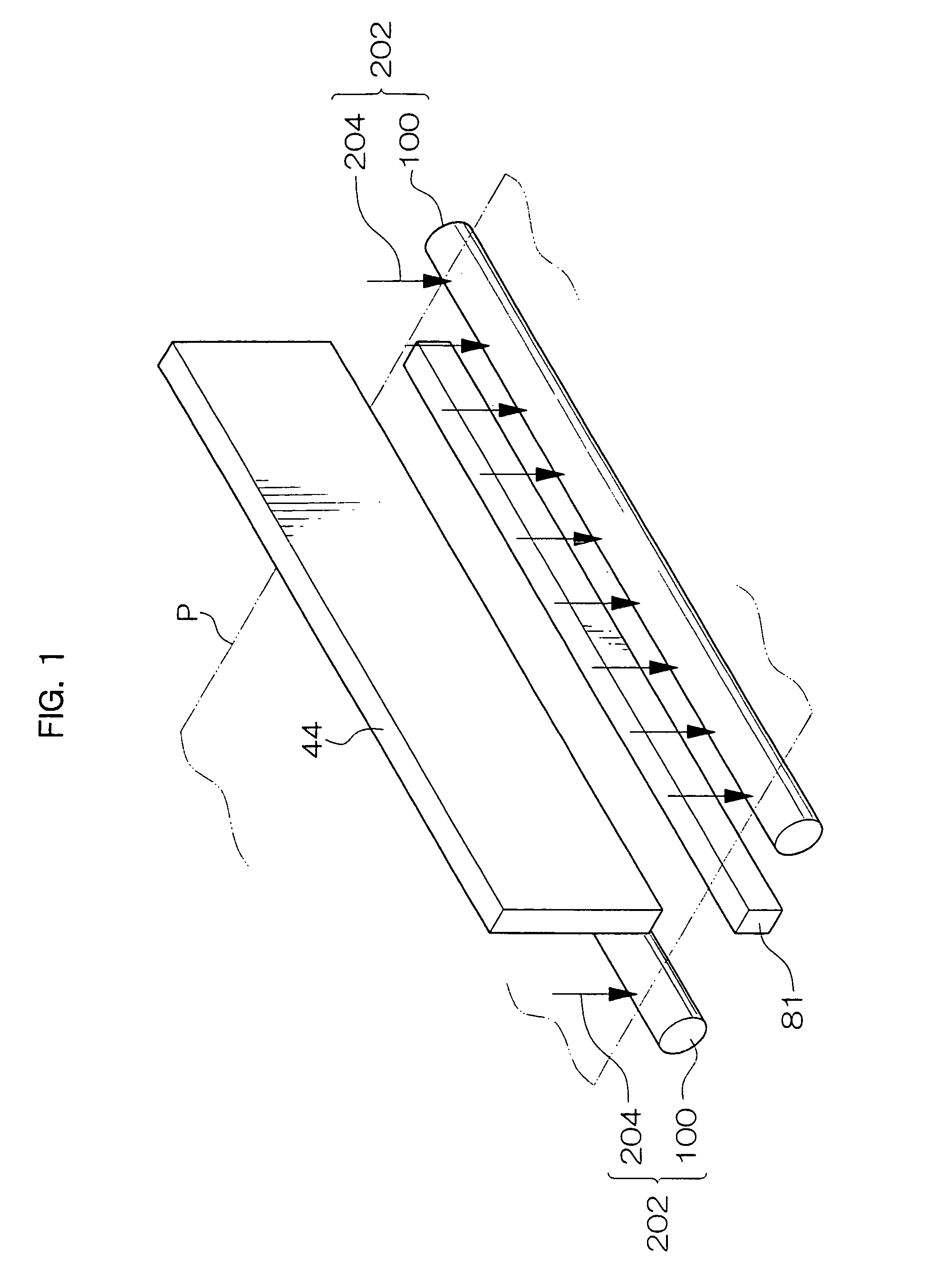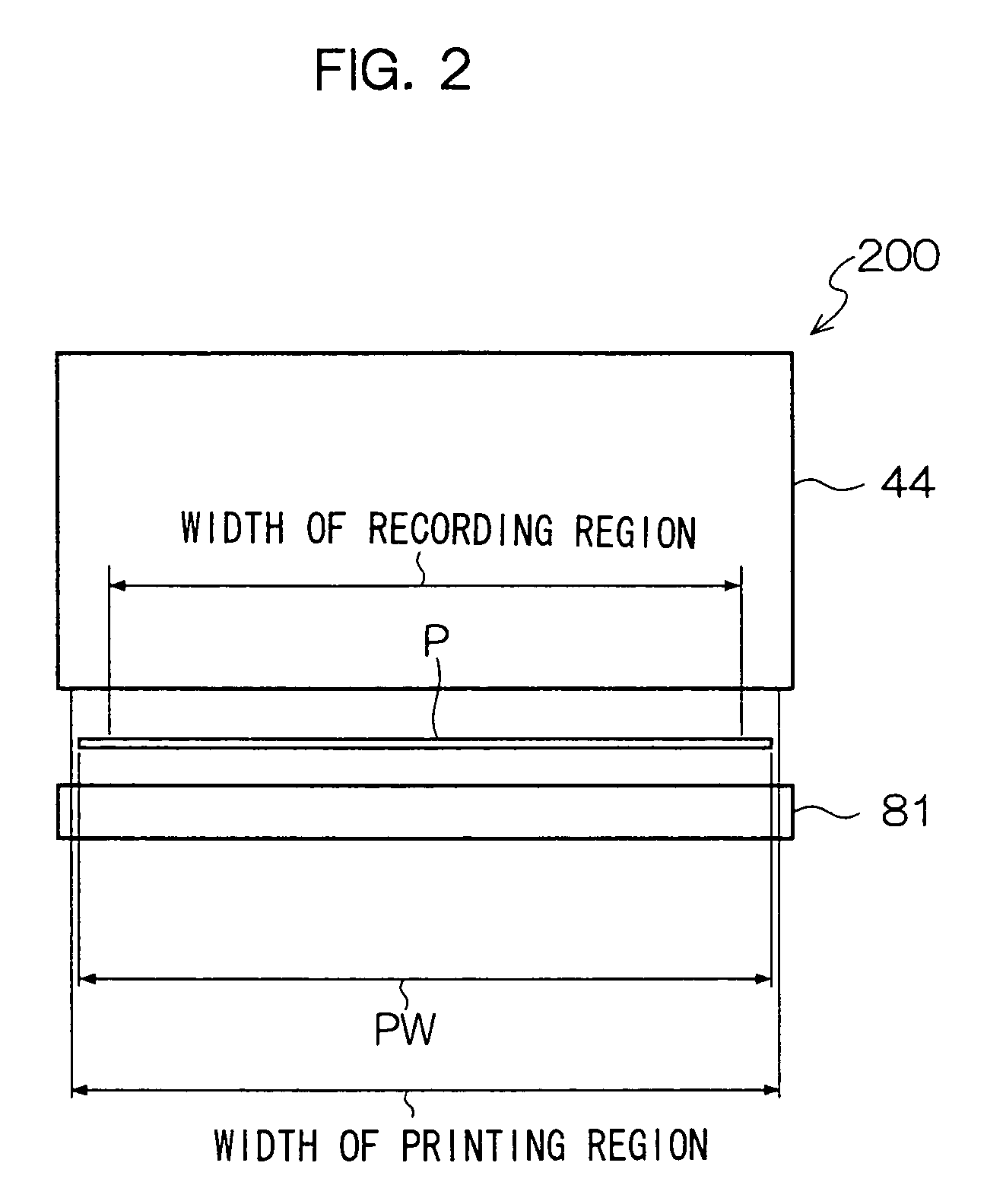Recording device
a recording device and recording technology, applied in printing, inking apparatus, other printing apparatus, etc., can solve the problems of slow printing speed, affecting printing performance, and difficulty in stably conveying sheets at a constant speed, so as to achieve maintenance operations, high image quality, and stably convey various types of recording media
- Summary
- Abstract
- Description
- Claims
- Application Information
AI Technical Summary
Benefits of technology
Problems solved by technology
Method used
Image
Examples
first embodiment
[0075]An ink jet recording device relating to an embodiment of the present invention will be described.
[0076]As shown in FIG. 1, a recording device 200 is basically structured by a recording head 44 which directly transfers ink to a sheet without contacting the sheet, a maintenance device 81 disposed so as to face a nozzle surface 40A of the recording head 44, and conveying device 202 conveying the sheet between the recording head 44 and the maintenance device 81.
[0077]The recording head 44 transfers ink directly to a sheet without contacting the sheet, and may be any of a thermal ink jet system, a piezo-type ink jet, a continuous-flow-type ink jet, an electrostatic-suction-type ink jet, or the like.
[0078]Any of a water-based ink, an oil-based ink, a so-called solid ink which is solid at ordinary temperatures, a solvent ink, or the like may be employed as the ink which is used. The coloring material in the ink may be a pigment or a dye.
[0079]As shown in FIG. 2, the recording head 44...
second embodiment
[0116]A recording device relating to a second embodiment of the present invention will be described.
[0117]As shown in FIG. 11, in a recording device 250 relating to the present embodiment, the recording head 44 is structured by a combination of a plurality of the recording head arrays 42A, 42B (see FIG. 4). By disposing a plurality of the recording heads 44 (the recording head arrays 42A, 42B) along the conveying direction, multi-color printing is possible. Here, recording heads 44Y, 44M, 44C, 44K (hereinafter called 44Y through 44M, and the same will apply to other members as well) (i.e., recording head arrays 42YA, 42YB through 42KA, 42KB), which can discharge ink drops of the respective colors of yellow, magenta, cyan and black, are disposed from the conveying direction upstream side, such that color printing is possible. However, the colors and numbers of the inks of the recording heads are not limited to those described above, and recording heads of other colors may be added, o...
example 1
[0132]An ink jet recording device, to which a recording device relating to Example 1 of the present invention is applied, will be described. Note that structural elements which are similar to those of the embodiments are denoted by the same reference numerals, and detailed description thereof is omitted.
(Overall Structure of Ink Jet Recording Device)
[0133]First, the overall structure of the ink jet recording device will be described.
[0134]As shown in FIG. 13, an ink jet recording device 10 is structured basically from a recording section 20 and a discharging section 22. The recording section 20 has a sheet supplying section 12 which feeds out a sheet, a registration adjusting section 14 which controls the posture of the sheet, a recording head section 16 forming an image on the sheet by discharging ink drops, and a maintenance section 18 carrying out maintenance of the recording head section 16. The discharging section 22 discharges the sheet on which an image has been formed in the...
PUM
 Login to View More
Login to View More Abstract
Description
Claims
Application Information
 Login to View More
Login to View More - R&D
- Intellectual Property
- Life Sciences
- Materials
- Tech Scout
- Unparalleled Data Quality
- Higher Quality Content
- 60% Fewer Hallucinations
Browse by: Latest US Patents, China's latest patents, Technical Efficacy Thesaurus, Application Domain, Technology Topic, Popular Technical Reports.
© 2025 PatSnap. All rights reserved.Legal|Privacy policy|Modern Slavery Act Transparency Statement|Sitemap|About US| Contact US: help@patsnap.com



